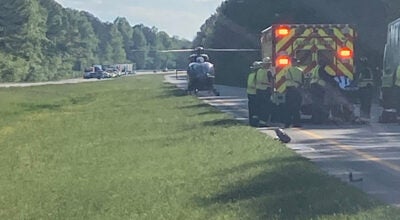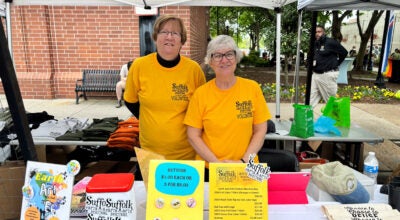NSA joins FIRST Tech Challenge
Published 4:25 pm Wednesday, February 25, 2015

Bill Sanford, coach of Nansemond-Suffolk Academy’s relatively new upper school FIRST Tech Challenge club, shows the robot his students built — named “Rick” — to compete against clubs from other schools.
Complementing Lego robotics clubs in the lower and middle schools, Nansemond-Suffolk Academy has recently started an upper school FIRST Tech Challenge club.
Physics teacher Bill Sanford, its coach, said he organized the club after students with the other two FIRST clubs expressed an interest in having a place to utilize their skills when they reach the upper school. The club was started with a $5,000 grant from The Suffolk Foundation.
Currently, Sanford said, the club has about 15 students, who meet at lunch once a week. They’ve been meeting for 17 weeks, and, accounting for the time it takes to eat lunch, that adds up to a total of 510 minutes of working together.
Each year, according to Sanford, the people at FIRST Tech Challenge create a challenge for all the clubs in America and internationally.
“This year it’s the ‘Cascade Effect,’” he said.
Clubs build their robots from a standard FIRST kit, but they can also purchase approved parts to improve them.
Robots are designed, built and programmed to complete competitive tasks, such as placing Whiffle balls in goals.
“Part of the competition is autonomous, where the robot does something pre-programmed in two minutes of time,” Sanford said.
The NSA students experienced their first competition at Norfolk State University on Jan. 24. They “came out excited about learning about robotics, and how to improve ours,” Sanford said.
“They learned from all the other teams. That’s part of the culture — gracious professionalism” — which the FIRST Tech Challenge cites on its website as part of its ethos.
The club is all about building so-called STEM (science, technology, engineering and math) skills. “They have to program a robot and learn the programming language,” Sanford said. “They also have to learn how to communicate better with each other, and teamwork, like divvying up the job.
“Certainly, they are learning critical-thinking skills … leadership skills and cooperation. A lot of them are learning hands-on (lessons), like what is an allen wrench and how does an axle and set of bearings work.”
The club also gives the students a sense of belonging, according to Sanford. “Some of them are not going to be in a winning athletics team, but this is their thing, and they get to go to compete, succeed and have awards,” he said.
“Their skill sets and their interests are appreciated.”






